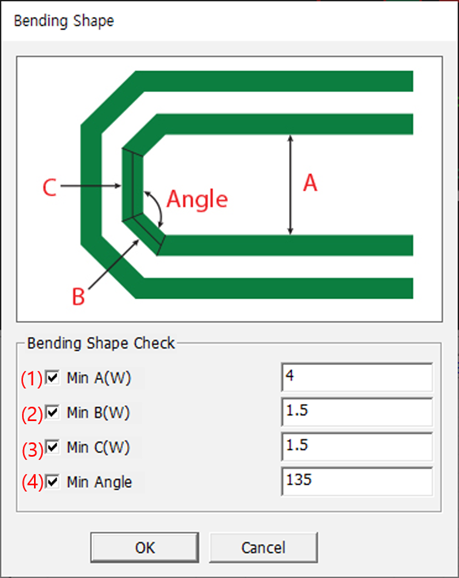Serpentine
This item checks all symmetry items for uniformity of the differential pairs design environments.
- Item Name: Input item name.
- Net: Define net group for serpentine check.
- Filter: Enter a filter to choose differential pair net from selected net group. After entering a base net and pair net click Add Filter. If this field is empty, the DFE considers Net Group as a single-ended net.
- Start Component: Define start component. This component is used for Symmetry Check only.
- Pin Escape: Enter a radius of circular region around pins to be excluded for the rule check.
- Symmetry Check
- Serpentine Start Point Check: Allowable maximum length between serpentine position and Start Component.
- Discrete Component Symmetry Check: Allowable maximum placement skew between passive components which are connected to differential signals.
- Via Symmetry Check: Allowable maximum distance between (+) and (-) vias of differential pair net.
- Via Length Check: Allowable maximum placement skew between vias which are used for differential signal pairs.
- Component Existence Check: Check if other components exist between differential pairs.
- Bending Shape Check
 Figure 1.
Figure 1. - Min A(W): Required minimum separation between bending trace.
- Min B(W): Allowable maximum length of segment “B”.
- Min C(W): Allowable maximum length of segment “C”.
- Min Angle: Required minimum trace angle.
- Serpentine Shape Check
 Figure 2.
Figure 2. - Length1 Check A = B = C = D: Allowable maximum length of segment A, B, C, D.
- Min Length2 Check: E, F, G (W): Allowable minimum length of E, F, G.
- Length2 Check: E = F = G: Allowable maximum length of segment E, F, G.
- Max Serpentine Height: H (W): Allowable maximum height of serpentine trace.
- Max Serpentine Length Check: Allowable maximum length of total serpentine.
- Max Serpentine Spacing: S1(S): Allowable maximum separation of serpentine.
- Serpentine Angle Check: Required minimum trace angle.